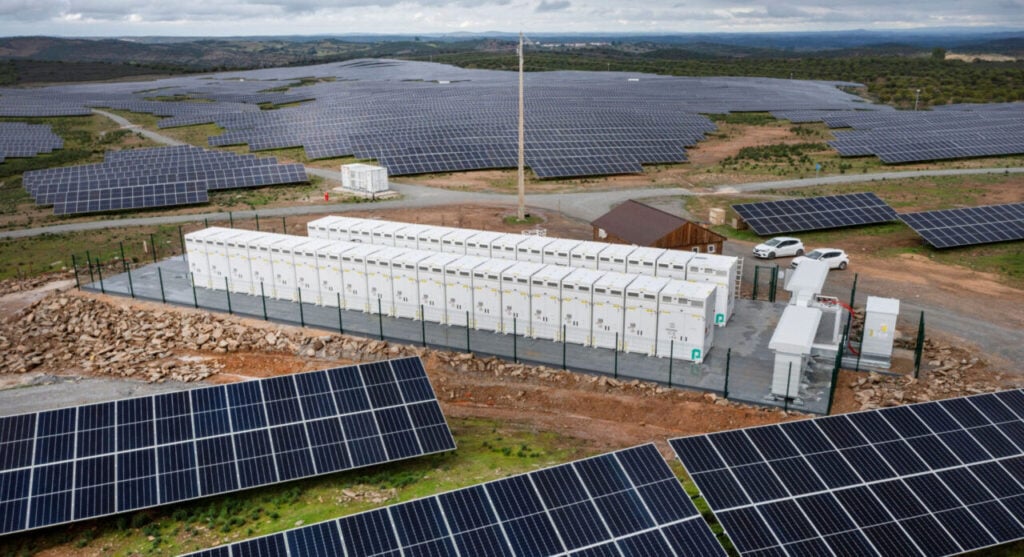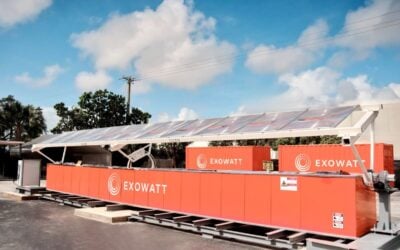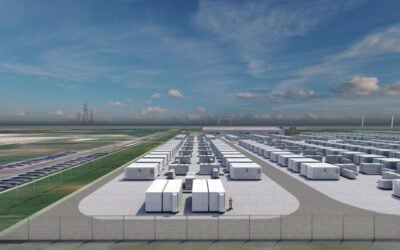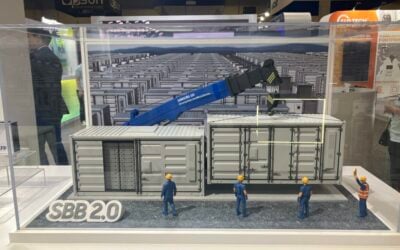
FlexGen “felt compelled to step up” and ensure the continuity of operation of the more than 11GWh of assets deployed by acquisition target Powin.
Kelcy Pegler, CEO of FlexGen, spoke to ESN Premium following the approval of his company’s deal to acquire almost all of Powin’s assets by the New Jersey US bankruptcy court hearing the Chapter 11 bankruptcy case.
“We’re capitalists. So, of course, we think there’s value to be derived from doing this deal, but with that aside, Powin was too important a company for these systems to be left stranded,” Pegler said of the motivation behind the acquisition.
Powin’s deployment of 11.3GWh of systems since the mid-2010s significantly contributed to the industry’s growth. Pegler said that FlexGen “felt compelled to step up and ensure that these critical infrastructure assets have a continuity plan.”
Try Premium for just $1
- Full premium access for the first month at only $1
- Converts to an annual rate after 30 days unless cancelled
- Cancel anytime during the trial period
Premium Benefits
- Expert industry analysis and interviews
- Digital access to PV Tech Power journal
- Exclusive event discounts
Or get the full Premium subscription right away
Or continue reading this article for free
“Most emerging markets have early movers, and they’re not always winners, but the work that Powin did was important and significant. FlexGen takes it seriously to really be the champion of these customers’ systems,” Pegler said.
FlexGen not going into manufacturing
FlexGen is acquiring three things: Powin’s hardware and software IP, its extensive spare parts inventory and what the CEO called “the opportunity to be the path to least resistance for customer success.”
Powin has two main battery energy storage system (BESS) product lines, the Centipede platform, which allows for end-to-end stacking of modular units for very large projects and launched in 2021, and Powin Pod, which is a 5MWh BESS enclosure in a standard 20-foot ISO container form factor, launched last year.
Despite acquiring a hardware solution line, Pegler said FlexGen is committed to a technology-agnostic strategy for battery and BESS suppliers, focusing on the software and services for delivering and operating battery assets.
The acquisition will not change this strategy, according to the CEO, who said that Powin’s Centipede and Powin Pod will be the 66th and 67th BESS hardware sets that FlexGen has configured for customer projects to date.
Pegler emphasised that FlexGen is not entering the manufacturing business. Its acquisition of Powin’s current projects and pipeline means that some customers will favour retaining Powin hardware, for which the company is actively discussing licensing with manufacturers.
“FlexGen is going to remain committed to our strategy. We will continue to be hardware agnostic, and we will focus on services and technology. We will continue to turn batteries on and keep batteries on,” Pegler said.
Opportunity coincided with push to extend international reach
While Powin cited headwinds facing the US energy storage industry—namely tariffs and the then-present threat of the investment tax credit (ITC) repeal—as the main factors contributing to its financial challenges, the company was also active internationally.
This includes the landmark Waratah Super Battery in New South Wales, Australia, which at 850MW/1,680MWh has been deployed as a ‘giant shock absorber’ for the electricity grid, and projects in other regions including Taiwan, the UK and most recently, Portugal.
FlexGen was established 15 years ago as a microgrid specialist with projects all over the world, but as it pivoted into the pure play BESS space focused more and more on projects within the US.
One of the company’s priorities for 2025 was to “re-expand into international markets,” Pegler said. The timing of the Powin deal “reconciles perfectly with our ambitions to be a more global company, and we really look forward to supporting the international projects.”
FlexGen’s value proposition has long been around its energy management system (EMS) and controls platform, Hybrid OS.
“The best thing about software is that it doesn’t care where you live. It doesn’t care where the asset sits,” Pegler said.
While FlexGen will support Powin customers who wish to stick with the Powin ecosystem rather than switch to Hybrid OS, the CEO said he is confident that most customers will migrate to the FlexGen platform over time.
Pegler refers to a study carried out by energy transition consultancy Orennia, which assessed energy storage asset performance in 2024 in California and Texas and found that FlexGen systems had the highest uptime in the study, at 98%.
While that means it outperformed the nearest competitors by around 5%, Pegler said an equally important takeaway is that FlexGen’s portfolio included 16 different configurations of battery and inverter, as opposed to its rivals’ single vertically integrated systems.
Industry headwinds and increased competition
In a June ESN Premium article, Drew Lebowitz, managing director of energy storage consultancy Powerswitch, said that while industry headwinds had compounded Powin’s financial woes, the company had been facing increasingly tougher competition in the market, particularly from Chinese battery cell manufacturers that launched their own integrated BESS offerings.
When asked what would see FlexGen through where Powin had not made it, Kelcy Pegler said FlexGen has been profitable for the last three years, has over US$200 million in liquidity without debt and is committed to its “core principles of a capital-light business of services and technology.”
The CEO added that the battery storage industry is following a similar route to solar PV, whereby hardware components became commoditised over time and the size and scale of manufacturing were what mattered.
“The size and scale of manufacturing prowess is really important, and we’re going to leave the manufacturing to those companies that have true expertise doing that,” Pegler said.
The headwinds Powin faced, meanwhile, represent uncertainty in policy direction, which the FlexGen CEO said “is the most challenging dynamic in the battery storage space right now.”
However, Pegler claimed the passage of the H.R.1 (One, Big Beautiful Bill Act) budget reconciliation into law and tariffs “starting to fall into place” begins to provide some clarity in the US market.
“There’s so much macro support for battery storage. Every day I’m talking to all different customers, whether it be data centres, utilities, independent power producers (IPPs) or developers, and the demand for battery storage is significant. All we’re waiting for is the uncertainty to dissipate.”





